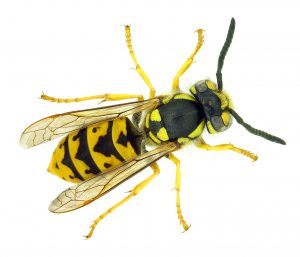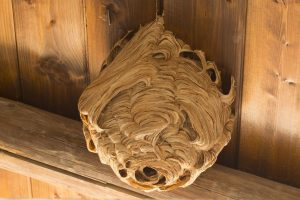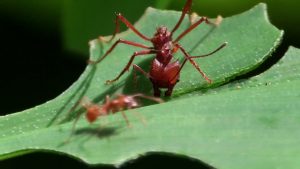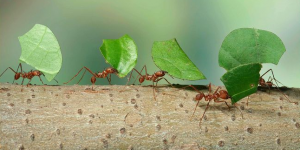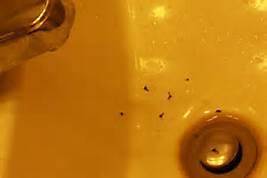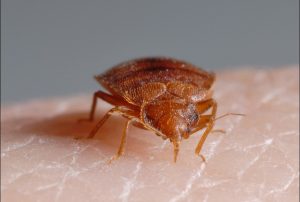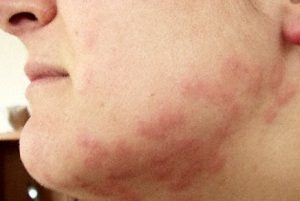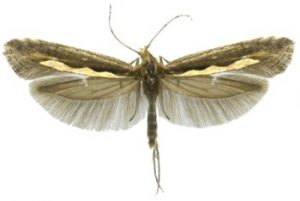 Diamondback moth originated in Europe has a global distribution and are found in Europe, Asia, Africa, the Americas, Australia, New Zealand, and the Hawaiian Islands. The species belonging to Plutella genus are small greyish-brown moth sometimes has a cream-colored band that forms a diamond along its back. Hence the name Diamondback Moth.
Diamondback moth originated in Europe has a global distribution and are found in Europe, Asia, Africa, the Americas, Australia, New Zealand, and the Hawaiian Islands. The species belonging to Plutella genus are small greyish-brown moth sometimes has a cream-colored band that forms a diamond along its back. Hence the name Diamondback Moth.
The moth having a short life cycle of nearly 14 days bears the capability of migrating over long distances. Diamondback moth usually feeds on the leaves of cruciferous crops and plants that produce glucosinolates. They deposit their eggs on host plants with a larval infestation. All the plants are not used for these moths as host plants as the larvae fail to survive. Hence the plants which produce glucosinolates are selected as host plants by this super pest diamondback moth.
Here are some of the evidence of the plants being considered as host plants leading to several damages to crop and crop yield.
UK brussels sprout harvest hit by ‘super-pest’ moths
Wednesday 7 December 2016, Published in The Guardian
Love them or loathe them, they are a staple part of the Christmas dinner. However, consumers shopping for sprouts this year could have less choice than usual after some British-grown crops were ravaged by “super-pest” moths during the summer.
The problem has arisen as a result of an explosion in the numbers of diamondback moths arriving in the UK from Europe, which can cause huge damage to crops such as sprouts, cabbages, and cauliflowers as they are resistant to most insecticides.
Growers reported problems in the Channel Islands but this week some growers in Lincolnshire – which supplies almost two-thirds of all sprouts produced in the country – reported losses of up to 60%.
Bad news for farmers, good news for children: Brussels sprouts crop faces Christmas ruin
By Leon Watson, 30 November 2016, Published in the Telegraph news
For some, it threatens to ruin Christmas; for others, perhaps of younger generations, it is the promise of joyous relief.
Brussels sprouts could be off the menu this year as the crop could be ruined by a plague of immigrant moths invading the UK.
Supplies of the vegetable are already running low after several farmers’ festive crops were decimated by armies of the cabbage-loving diamondback insects.
The moth especially likes to munch on Brassica plants, which include cabbages, cauliflower, and broccoli. And it has become increasingly resistant to available insecticides.
The agriculture industry has been trying to find biological and natural ways to eliminate the diamondback moth especially since the moths have become resistant to pesticides. Common enemies of the moth include the parasitoids or lacewings. Lacewings feed on eggs and young larvae, while the parasitoids only feed on the eggs.
 It has been stated that “the insect diamondback moths, notorious among farmers as pests that cause $4 to $5 billion of damage a year worldwide.”
It has been stated that “the insect diamondback moths, notorious among farmers as pests that cause $4 to $5 billion of damage a year worldwide.”
And In the Horticulture Week, it has been stated as “non-native arrival to the US, the diamondback moth (Plutella xylostella) is the world’s most damaging agricultural pest of brassica crops, costing US farmers over $4 billion yearly in crop losses and control management.”
To stop the infestation originally, pesticides were used to kill the moths but Diamondbacks have developed resistance to many of the common chemicals. For this reason, different biological, cultural, and chemical controls are being developed to reduce the destruction caused by the moths but proven to be ineffective.
Hence need a solution which gives complete protection to crops from these pesky pests.
C Tech Corporation provides you with value-add product called as Combirepel™ which is an anti-insect aversive. Combirepel™ is manufactured on the basis of green technology. It is durable at extreme climatic conditions such as changes in temperature, rainfall, pressure etc.
Our product is ROHS, ROHS2, ISO 9001:2000, ISO 14001:1996, APVMA, NEA complaint and FIFRA exempted. Our product will not kill the targeted as well as non-targeted species but only repel the pests which help in maintaining the ecological balance of the earth.
Our product works on the mechanism of repellency. It temporarily inhibits the mating cycle of the insects. The product impairs the ability of the insects to reproduce, that is the insects will not lay eggs or the laid eggs will be infertile. The product causes feeding disruption in an insect by triggering an unpleasant reaction within the insect which might try to feed on the application. The product temporarily blocks the reproduction system of the insects by hindering the release of the vital hormones for growth.
Combirepel™ is available in three basic forms: Masterbatch, liquid concentrate, and lacquer.
Combirepel™ Masterbatch is specially made for polymeric applications and used as additives in their processing time. The polymeric applications like wires and cables, pipes, agricultural films and mulches, greenhouse films, tree guards, irrigation pipes etc can be manufactured using our masterbatch to keep pests from damaging these applications. The crops which are suitable to cover with plastic bags/covers can be applied to our product. The polymeric horticultural equipment can be incorporated into our product for getting best results.
Combirepel™ Liquid concentrate is to be mixed in paints in proper proportion and can be applied to the interior and exterior of the agricultural storage rooms, houses, offices, fences around the farms etc.
Combirepel™ lacquer can be directly applied to the applications such as wooden fences, already installed pipes, wires, cables, etc.
Using our product, you will get protection from the diamondback moth!
Contact us at technical.marketing@ctechcorporation.com to keep the pests away.
Also, visit our websites:
http://www.ctechcorporation.com/
http://www.rodrepel.com/
http://www.termirepel.com/
http://www.combirepel.com/
Follow our Facebook pages at:
1] https://www.facebook.com/Combirepel-411710912249274/
2] https://www.facebook.com/Termirepel-104225413091251/
3] https://www.facebook.com/Rodrepel-120734974768048/
Follow us on our Twitter pages at:
1] https://twitter.com/rodrepel
2] https://twitter.com/termirepel
3] https://twitter.com/combirepel

